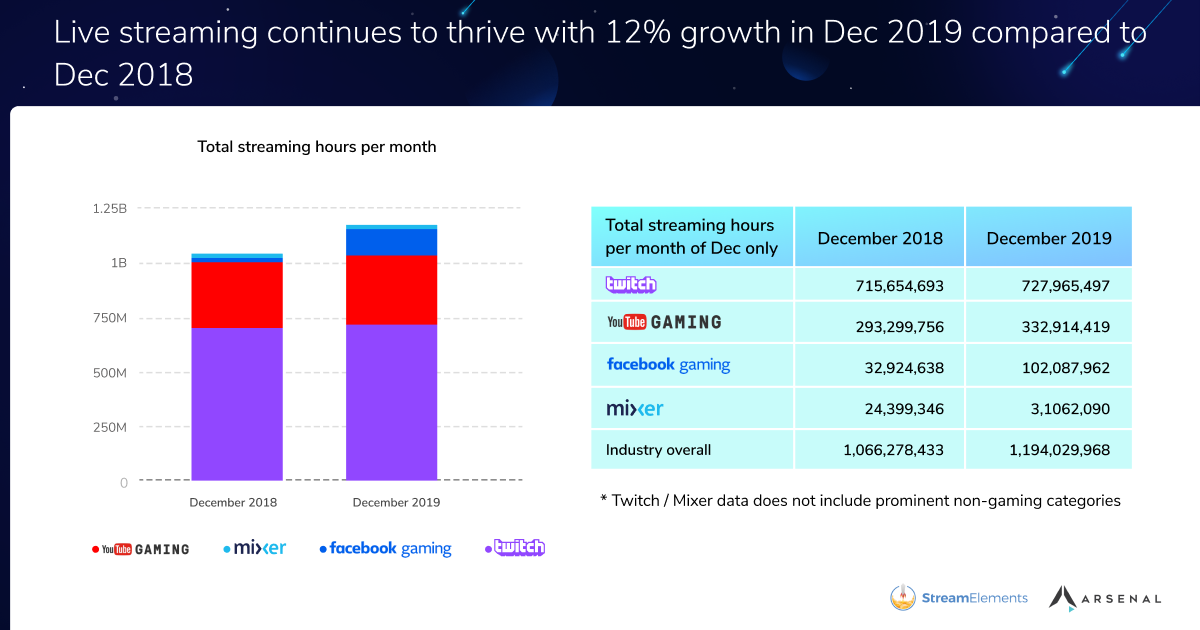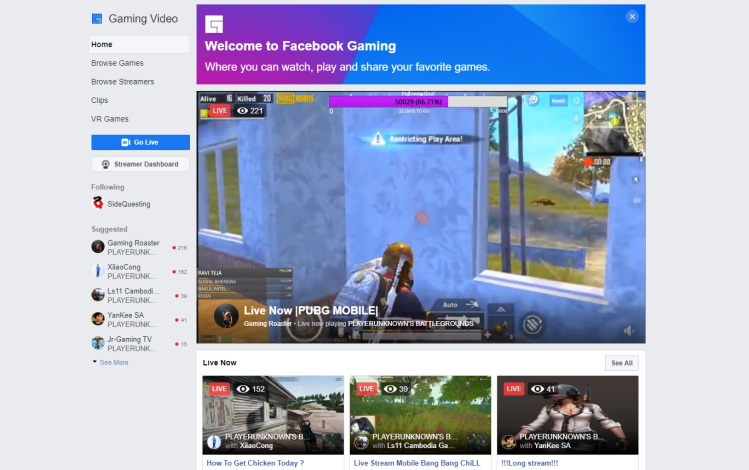In the livestreaming-platform wars, Facebook Gaming is having the most noteworthy growth spurt. The company’s live gaming videos saw a huge increase in hours watched. It also grew across a number other key metrics, according to data from StreamElements and Arsenal.gg.
Facebook Gaming had an increase of 210% in hours watched in December 2019 compared to December 2018. That was enough to give it an 8.5% share of the overall hours-watched market. That’s up from 3.1% during the same period last year. The video service also saw the average number of viewers per hour streamed jump 78%.
This jump comes because Facebook Gaming brought in some new broadcasters. In November, it signed Hearthstone streamer Jeremy “DisguiseToast” Wang. Then in December, it made an agreement with influencer Corrina Kopf and Super Smash Bros. streamer ZeRo. But it’s also because Facebook’s existing creators began using the service more consistently.
“Among the most significant findings is how Facebook Gaming is picking up serious traction with its market share going from roughly 3% to 9% year-over-year,” StreamElements chief executive officer Doron Nir said. “It had less to do with growing their overall base of streamers and more to do with people watching the existing streamers a lot more and their big name end-of-the-year talent acquisitions. If they maintain this momentum in 2020 then their trajectory will eventually make them a true competitor with the major players.”

Facebook Gaming isn’t the only growing livestreaming platform. YouTube Gaming, Mixer, and Twitch all grew year-over-year in terms of hours watched. Overall, hours watched across all four major sites grew 12% from 1.07 billion to 1.19 billion.
YouTube Gaming has signed Twitch broadcaster Jack “CouRage” Dunlop. Mixer, meanwhile, has brought in Tyler “Ninja” Blevins, “Michael “Shroud” Grzesiek, and Cory “King Gothalion” Michael.
Facebook Gaming is growing fast, but Twitch is still weathering the competition
Facebook Gaming’s market-share growth has to come from somewhere. The good news for YouTube Gaming and Mixer is it isn’t coming at their expense. Both saw their market share of hours watched grow steadily year-over-year. Twitch, however, was down from 67.1% to 61%.

Above: Livestreaming is growing overall.
But while Twitch is down in market share, its hours watched were still up in December. Other platforms are establishing themselves by bringing in known talent and by attracting new audiences.
“Because all of the platforms have reached a level of parity in terms of [tech] performance, acquiring or fostering talent and working with third-party developers to provide those streamers with more means to monetize, engage, and retain their viewers is the blueprint for success,” said Nir.
For Twitch, this mean’s it’s going to have to continue dealing with Mixer, YouTube Gaming, and Facebook Gaming poaching its talent. And, at least so far, Amazon’s livestreaming service is proving that it can withstand that assault.
“With content being king in the current live streaming platform wars, Twitch’s rotating list of top stars and the recent acquisitions by their competitors illustrates there is enough talent for multiple platforms to flourish in this space,” Lightstream (Arsenal.gg parent company) chief executive Stu Grubbs said. “The current challenges now vary for each stakeholder. Platforms need to know who to sign. Creators need to determine where their content is going to best perform. And brands have to figure out who to sponsor — with an increased focus on analytics being a core part of solving these equations.”

